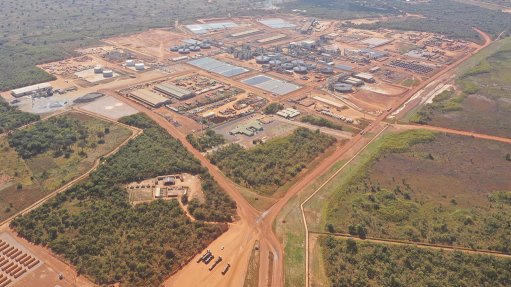Aussies Increase Control Of Local Gold Mines
Australian control of its $12 billion gold mining industry has risen to around 50 per cent in recent months, with several large overseas-based gold producers selling some of their Australian operations to local companies, Melbourne-based gold mining consultants Surbiton Associates Pty Ltd said.
Australia is the world’s second largest gold producing country and gold is one of our top exports. In 2013, Australian output rose to 273 tonnes of gold, up from 255 tonnes in the previous year. China is the world’s largest producer with output in 2013 estimated to have totalled 428 tonnes, with the US third at 227 tonnes. “When the gold boom started in the early 1980s Australia’s control of its domestic gold mining industry was around 80 per cent,” said Surbiton Associates director, Dr Sandra Close. “However around the turn of the new century there was a spate of overseas takeovers when the Australian dollar was weak and Australian control fell below 30 per cent. But it has slowly climbed back - local control has now risen to about 50 percent.” “Recently the pace of overseas selling has increased significantly,” Dr Close said. “We have seen locals who already had operating experience expand their gold interests considerably.”
Canada’s Alacer Gold Corp sold its Higginsville and South Kalgoorlie operations to Metals X in late 2013. Early this year Canadian-based Barrick Gold Corp sold Kanowna Belle and Plutonic and its 51 per cent interest in the East Kundana joint venture to Northern Star Resources, which already operated Paulsens. Then, in early July Northern Star also bought Jundee from Newmont Mining Corp. Barrick Gold Corp also sold its Granny Smith, Lawlers and Darlot operations to South Africa’s Gold Fields Ltd but this had no effect on overall Australian control, as the mines went from one overseas company to another.
“Several of the world’s largest gold producers have switched their strategy from chasing ounces to rationalisation and cost reduction,” Dr Close said. “This does not always sit easily in an Australian context as, unlike many other gold producing regions, Australia’s production comes from a considerable number of smaller mines rather than a small number of large mines.” According to the United States Bureau of Mines (USBM) Australia has the largest gold reserves of any country. In 2013, these were estimated to total 9,900 tonnes, or more than 35 years’ production at current rates.
“Despite Australia having the largest gold reserves, a large proportion of these are locked up in iron oxide-copper- gold deposits such as Olympic Dam and Prominent Hill,” Dr Close said. “It will be many decades before these deposits are fully exploited.” These are big, long-term operations and the rate of mining is based on rate of the production of the main ore component which is copper, so the amount of gold output is contingent on the overall production schedule.
“So it looks great on paper but the practicalities are that much of our gold reserves are for the very long term,” Dr Close said. “For a sustainable industry we still need production from traditional primary gold deposits and ongoing exploration is as vital today as ever it was.” Dr Close said that in the last 18 months the local gold sector had adjusted to lower prices by cutting costs, reducing staffing levels and treating higher grade ore. Nevertheless, some companies were still battling. “The West Australian government is currently examining royalty rates but any adjustment should only be made after very careful consideration and consultation with producers, both big and small,” Dr Close said. “It’s essential to get the right balance.”
“Gold is often overlooked as an important export earner for Australia,” Dr Close said. “Although gold’s export value is less than that of iron ore or coal, it is worth more than export earnings from meat, almost double the export earnings from wheat, and four times the earnings from wool.”
Comments
Press Office
Announcements
What's On
Subscribe to improve your user experience...
Option 1 (equivalent of R125 a month):
Receive a weekly copy of Creamer Media's Engineering News & Mining Weekly magazine
(print copy for those in South Africa and e-magazine for those outside of South Africa)
Receive daily email newsletters
Access to full search results
Access archive of magazine back copies
Access to Projects in Progress
Access to ONE Research Report of your choice in PDF format
Option 2 (equivalent of R375 a month):
All benefits from Option 1
PLUS
Access to Creamer Media's Research Channel Africa for ALL Research Reports, in PDF format, on various industrial and mining sectors
including Electricity; Water; Energy Transition; Hydrogen; Roads, Rail and Ports; Coal; Gold; Platinum; Battery Metals; etc.
Already a subscriber?
Forgotten your password?
Receive weekly copy of Creamer Media's Engineering News & Mining Weekly magazine (print copy for those in South Africa and e-magazine for those outside of South Africa)
➕
Recieve daily email newsletters
➕
Access to full search results
➕
Access archive of magazine back copies
➕
Access to Projects in Progress
➕
Access to ONE Research Report of your choice in PDF format
RESEARCH CHANNEL AFRICA
R4500 (equivalent of R375 a month)
SUBSCRIBEAll benefits from Option 1
➕
Access to Creamer Media's Research Channel Africa for ALL Research Reports on various industrial and mining sectors, in PDF format, including on:
Electricity
➕
Water
➕
Energy Transition
➕
Hydrogen
➕
Roads, Rail and Ports
➕
Coal
➕
Gold
➕
Platinum
➕
Battery Metals
➕
etc.
Receive all benefits from Option 1 or Option 2 delivered to numerous people at your company
➕
Multiple User names and Passwords for simultaneous log-ins
➕
Intranet integration access to all in your organisation
















